-
Posts
10,744 -
Joined
-
Last visited
Content Type
Events
Forums
Downloads
Quizzes
Gallery
Blogs
Posts posted by Social Media
-
-
If your not interested in discussing the topic because other subjects are more important to you, then move on. Any further off topic diversion attempts will be removed.
Trump Confirms Surprise US Airstrikes on Iran’s Nuclear Sites, Including Fordo
-
@MalcolmB any more off topic troll posts and it will not be only posts removed
-
Please discuss the topic and do not try to divert it to what you want it to be:
Trump Confirms Surprise US Airstrikes on Iran’s Nuclear Sites, Including Fordo
-
IMPORTANT UPDATE:
President Trump statement on U.S. Strikes on Iranian Nuclear Sites
WATCH: Complete statement from President Trump on U.S. Strikes on Iranian Nuclear Sites pic.twitter.com/n4QU97SHDH
— CSPAN (@cspan) June 22, 2025-
 1
1
-
 1
1
-
 3
3
-
-
-
Thank you, the topic is now in the world news, please continue there:
//closed//
-
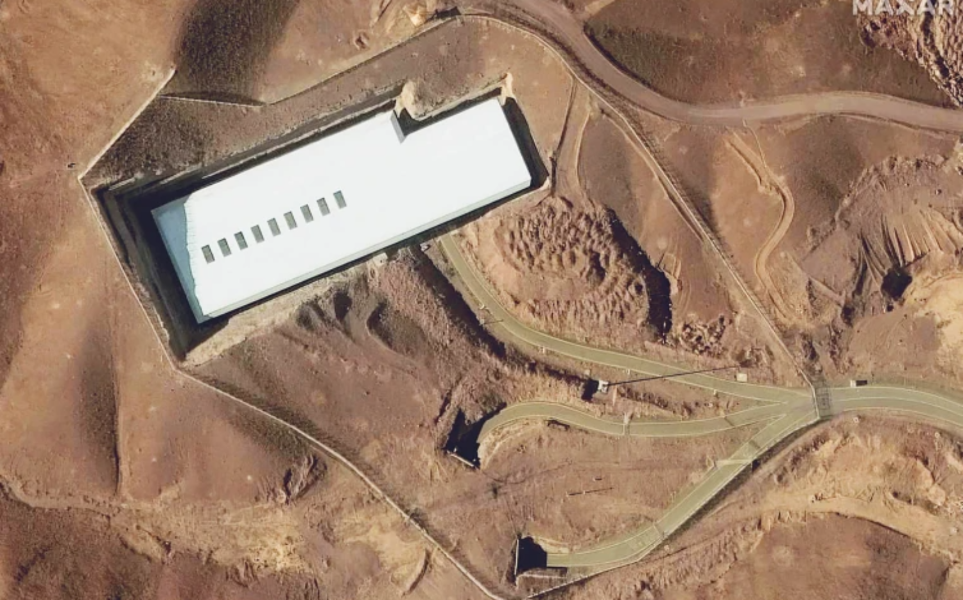
Trump Confirms Surprise US Airstrikes on Iran’s Nuclear Sites, Including Fordo
President Donald Trump has announced that the United States has launched a surprise military strike on Iran, targeting three of its nuclear facilities in what he described as a “very successful attack.” The move ends weeks of speculation over whether Washington would join Israel in its escalating conflict with Tehran.
Fordow pic.twitter.com/SnpRDnbLy2
— Israel News Pulse (@israelnewspulse) June 22, 2025Ever since Israel began its offensive against Iran, there had been a tense and uncertain waiting game over whether Trump would involve the United States directly. His hesitation was particularly noteworthy given his long-standing criticism of previous American interventions in the Middle East. As recently as two days ago, Trump had told reporters he would make a decision on US involvement “within two weeks,” a remark that seemed designed to calm tensions and buy time for diplomatic maneuvering.

However, in a dramatic turn of events, Trump announced through a post on Truth Social that the United States had carried out airstrikes on three key Iranian nuclear sites—Fordo, Natanz, and Esfahan. Among these, Fordo is known to be heavily fortified and located deep underground, requiring specialized ordnance to penetrate its defenses.

“We have completed our very successful attack on the three Nuclear sites in Iran, including Fordow, Natanz, and Esfahan. All planes are now outside of Iran air space,” Trump wrote.
The president, also revealed that a “full payload of bombs” had been dropped on the Fordo site. He did not specify whether the sites were destroyed or merely damaged, and so far, no video or photographic evidence of the strikes has been released to the public. “All planes are on their way back to the US,” he added.
According to a report by the Reuters news agency citing a US official, the attack involved B-2 stealth bombers, aircraft known for their ability to penetrate dense air defenses and deliver bunker-buster bombs—suggesting that the operation was carefully calibrated to disable Iran’s most protected nuclear facilities.
The announcement is sure to raise fresh concerns over the prospect of a broader regional conflict. US airstrikes on Iranian territory—especially on nuclear infrastructure—represent a major escalation and risk triggering retaliation from Tehran or its allies across the Middle East.
Whether Trump’s decision will spark further violence or serve as a deterrent remains to be seen. But what is certain is that his unexpected move has brought an end to the guessing game that has dominated headlines since Israel began its assault—and ushered in a new, unpredictable phase of the confrontation with Iran.
 Adapted by ASEAN Now from BBC 2025-06-22
Adapted by ASEAN Now from BBC 2025-06-22
-
 1
1
-
 3
3
-
 2
2
-
 17
17
-
 2
2
-
 1
1
-
-
@TallGuyJohninBKK the posts you have made have had text size reduced to confirm to Community Standards aside from the headlines. Please do not keep doing this.
5. Do not post text with all capital letters or with over-sized fonts
-
@BLMFem your post was removed, any more of that and you will get more than a public mod post warning
17. ASEAN NOW news team collects news articles from various recognised and reputable news sources. The articles may be consolidated from different sources and rewritten with AI assistance These news items are shared in our forums for members to stay informed and engaged. Our dedicated news team puts in the effort to deliver quality content, and we ask for your respect in return. Any disrespectful comments about our news articles or the content itself, such as calling it "clickbait" or “slow news day”, and criticising grammatical errors, will not be tolerated and appropriate action will be taken. Please note that republished articles may contain errors or opinions that do not reflect the views of ASEAN NOW.
If you'd like to help us, and you see an error with an article, then please use the report function so that we can attend to it promptly.
-
 1
1
-
-
Further off topic diversion attempts have been removed. The topic title is below, feel free to read the OP and comment on it.
Trump to make decision on US involvement 'within two weeks'
An additional post over a month old article on Hegseth has been removed.
-
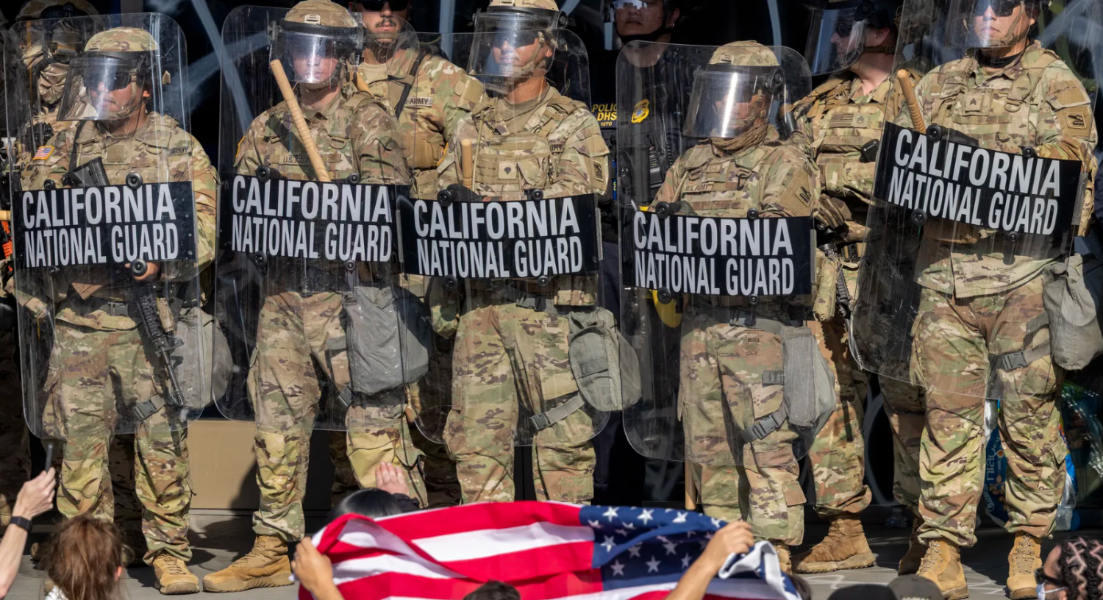
Trump Hails Court Ruling on National Guard Deployment as “BIG WIN” Amid LA Protests
President Donald Trump is celebrating a federal court decision that allows his administration to continue using National Guard troops in Los Angeles to counter protests against federal immigration raids. The ruling, issued Thursday by the 9th U.S. Circuit Court of Appeals, permits Trump to maintain the deployment despite objections from California state officials.
Trump wasted no time in declaring victory on his Truth Social platform, writing, “BIG WIN — Great decision for our country.” He praised the ruling as a validation of his authority to protect cities across America. “The Judges obviously realized that Gavin Newscum is incompetent and ill prepared,” Trump wrote, using a derogatory play on Governor Gavin Newsom’s name. “But this is much bigger than Gavin, because all over the United States, if our Cities, and our people, need protection, we are the ones to give it to them should State and Local Police be unable, for whatever reason, to get the job done.”
The court’s opinion, issued without a named author, marks a reversal of a lower court’s earlier decision. U.S. District Judge Charles Breyer had previously ruled in favor of California Governor Newsom’s legal challenge, which argued that Trump lacked the authority to federalize the National Guard over the state's objections. The new appellate court decision blocks that ruling for now and allows the deployment to continue while the legal case proceeds.
In its unsigned opinion, the court wrote, “It is likely that the President lawfully exercised his statutory authority.” The judges noted that their conclusion was based on giving “appropriate deference to the President’s determination,” ultimately deciding that “he likely acted within his authority in federalizing the National Guard.”
The case centers on Trump’s decision to deploy approximately 4,000 National Guard soldiers and more than 700 Marines to respond to unrest in Los Angeles sparked by a wave of federal immigration raids. The move, which bypassed state consent, has intensified already strained relations between the Trump administration and California officials.
Governor Newsom has fiercely opposed Trump’s mass deportation plan and has repeatedly clashed with the federal government over immigration enforcement. His lawsuit aimed to halt what he described as an unconstitutional use of military force on U.S. soil without state approval.
While the court has allowed the federal deployment to proceed for now, it also emphasized the temporary nature of the ruling. The three-judge panel will continue to deliberate on the legal merits of the case in the coming weeks.
Meanwhile, the Pentagon has clarified the role of the deployed troops, stating that U.S. soldiers will not directly engage in law enforcement activities during the protests. Instead, they will focus on protecting federal buildings and personnel.
The ruling has further ignited the political divide over federal authority, immigration enforcement, and the role of the military in domestic affairs — issues that remain deeply contentious as Trump positions himself for a potential return to the White House.
 Adapted by ASEAN Now from The Independent 2025-06-21
Adapted by ASEAN Now from The Independent 2025-06-21
-
 1
1
-
 1
1
-
 2
2
-
 4
4
-
-
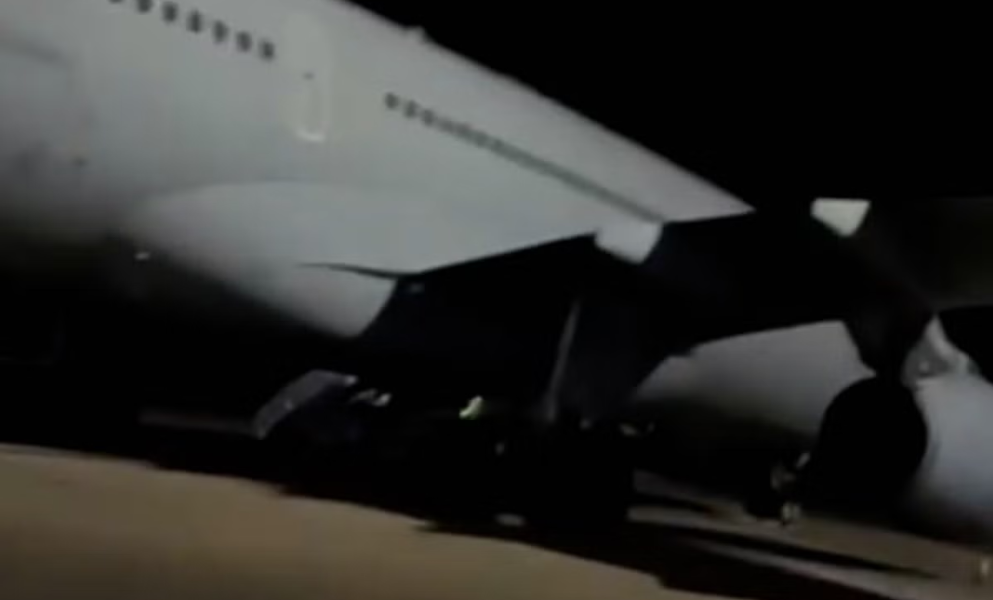
Activists Claim Damage to RAF Military Aircraft in Protest Against Gaza Operations
Two pro-Palestine activists say they infiltrated RAF Brize Norton and caused damage to military aircraft in protest against British involvement in the war in Gaza. The incident, which reportedly took place on 20 June, was captured on video and released by the protest group Palestine Action.
The footage shows the activists approaching the aircraft on electric scooters before spraying red paint into the turbine engines using what appear to be modified fire extinguishers. They are then seen using crowbars to cause further physical damage to the planes.
Palestine Action stated that the target was chosen due to the airbase’s regular flights to RAF Akrotiri in Cyprus, a key hub for British military operations in the Middle East. "Flights leave daily from the base to RAF Akrotiri in Cyprus," the group said. "From Cyprus, British planes collect intelligence, refuel fighter jets and transport weapons to commit genocide in Gaza.”
The group claims that the two individuals involved in the sabotage managed to leave the base without being apprehended. “The two activists escaped undetected,” Palestine Action reported.
RAF Brize Norton, the largest station in the Royal Air Force and a vital point for air transport, aerial refuelling, and strategic airlift, has yet to issue a statement in response to the incident.
The protest highlights growing tensions over Britain’s perceived military role in the conflict in Gaza. The activists’ use of symbolic tactics—red paint to mimic blood, for instance—echoes previous Palestine Action demonstrations aimed at raising awareness of what the group alleges is UK complicity in Israeli military actions.
While the authenticity of the activists' claims and the extent of the damage have not yet been independently verified, the incident marks a serious breach of security at one of the UK’s most important military installations.
RAF Brize Norton has been contacted for comment.
 Adapted by ASEAN Now from The Independent 2025-06-21
Adapted by ASEAN Now from The Independent 2025-06-21
-
 1
1
-
 1
1
-
-
- Popular Post
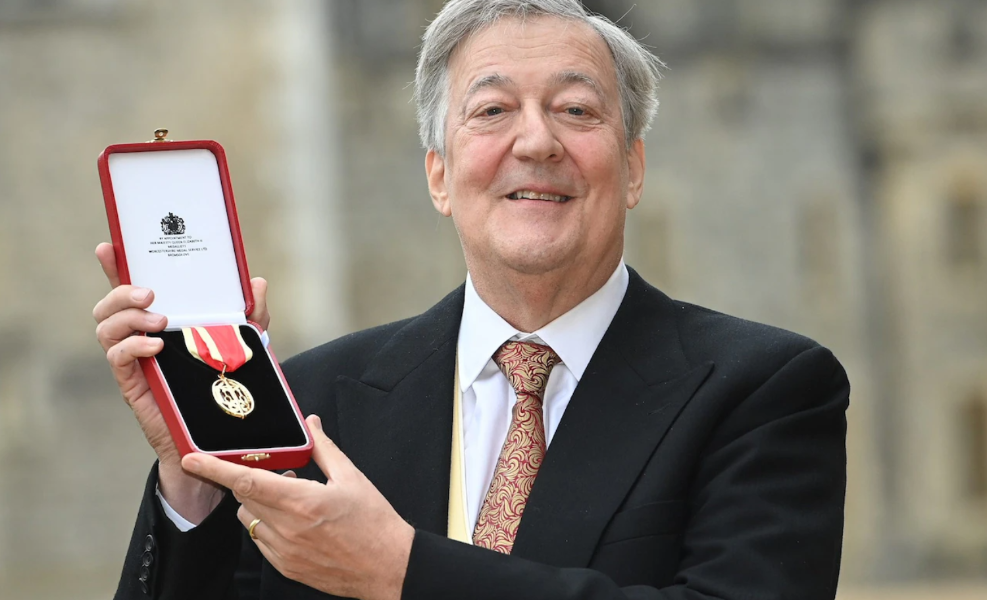
Stephen Fry and the Cultural Elite’s Contempt for Dissenting Women
Stephen Fry’s recent comments about JK Rowling have added yet another voice to the chorus of celebrities condemning the author over her views on sex and gender. Speaking on The Show People podcast, Fry remarked that Rowling “seems to be a lost cause for us,” accusing her of making comments that are “inflammatory and contemptuous, mocking and add to a terribly distressing time for trans people.” He even went so far as to claim that she had “been radicalised by TERFs” — a slur often used against feminists who assert the importance of biological sex.
It’s not the first time Fry has taken aim at Rowling. In 2022, on another podcast, he attempted a more diplomatic approach, calling Rowling a friend while lamenting that his “trans friends and intersex friends” were “deeply upset by her.” He suggested a truce of sorts, calling on Rowling and trans activists to “retreat” and consider that both trans people and women should be able to live full lives with dignity. That request, couched in civility, failed to mask the underlying presumption: that Rowling’s concerns should be shelved to preserve the comfort of his social circle.
Fry’s misunderstanding of the political and cultural stakes in the so-called “gender wars” is telling. This is not about table manners or polite disagreement; it’s about rights, definitions, and material realities. The notion that Rowling is simply stirring controversy for its own sake ignores the substance of her arguments — arguments rooted in longstanding feminist thought and, as recently affirmed by the UK Supreme Court, biological fact.
Perhaps Fry’s renewed criticism was prompted by that very ruling, which defined “woman” in biological terms, a victory Rowling celebrated publicly. Her celebratory mood — champagne and cigars — may have rankled Fry. Some men, after all, don’t like to see women win arguments, especially when they defy the expectations of their cultural class.
Fry’s desire for Rowling to “retreat” is not just misguided — it’s a reflection of the cultural elite’s impulse to control who gets to speak and how. He himself has faced criticism in the past, including a 2023 scandal involving off-color jokes about women and Muslim terrorists. One might think that someone who has tasted the wrath of the outrage machine would be more cautious about demanding silence from others.
Instead, Fry now appears eager to stay in the good graces of a new cultural establishment — one that prizes ideological conformity over open debate. His image as a modern Oscar Wilde rings hollow when paired with such cowardice. At best, his remarks betray a shallow understanding of what Rowling actually says. At worst, they represent a willful attempt to isolate her for refusing to submit to the social orthodoxy of the moment.
Most revealing was Fry’s complaint that Rowling fails to show “love” to trans people. “You have to let people love you,” he said, arguing that to be labeled “transphobe” over mere disagreement is counterproductive. But demanding “love” from political opponents is not only unrealistic — it’s also a tactic used to shame women into silence. It reframes principled disagreement as a failure of etiquette or kindness.
What Fry and others seem to want is not genuine dialogue, but docility. They want women like Rowling to defer, apologise, and recede. When they refuse, it is framed as cruelty or bigotry. But women have every right to defend their boundaries, their spaces, and their vocabulary. They don’t need love — they need freedom, dignity, and respect. If that’s too much for Fry and others to stomach, then so be it.
JK Rowling has endured years of criticism from powerful figures, but she remains undeterred. She is used to being told to be quiet. And, thankfully, she continues to speak anyway.
 Adapted by ASEAN Now from The Telegraph 2025-06-21
Adapted by ASEAN Now from The Telegraph 2025-06-21
-
 3
3
-
 1
1
-
- Popular Post
- Popular Post

Three Years to the Brink: Climate Scientists Warn of Imminent 1.5C Breach
The planet is just three years away from surpassing the critical 1.5 degrees Celsius global warming threshold if carbon dioxide emissions remain at current levels, according to a dire new warning issued by more than 60 of the world’s top climate scientists. Their latest study, the most comprehensive update yet on the trajectory of global warming, signals that without swift and severe cuts to emissions, the world will overshoot its most important climate target.
In 2015, nearly 200 nations signed the landmark Paris Agreement, pledging to limit global temperature increases to 1.5C above pre-industrial levels in hopes of staving off the most catastrophic impacts of climate change. However, a continued reliance on fossil fuels and widespread deforestation have pushed that target dangerously close to being breached.
"Things are all moving in the wrong direction," said Professor Piers Forster, lead author of the study and director of the Priestley Centre for Climate Futures at the University of Leeds. "We're seeing some unprecedented changes and we're also seeing the heating of the Earth and sea-level rise accelerating as well." He added that these shifts are no surprise. "These changes have been predicted for some time and we can directly place them back to the very high level of emissions."
At the start of 2020, climate scientists estimated humanity had around 500 billion tonnes of carbon dioxide left to emit to retain a 50% chance of staying within the 1.5C limit. But by early 2025, this “carbon budget” will have shrunk dramatically to just 130 billion tonnes, according to the new findings. With current emissions averaging 40 billion tonnes per year, that budget would be depleted in roughly three years, potentially locking the planet into breaching the Paris threshold.
Although this would not immediately result in a global temperature rise of 1.5C, the trajectory suggests that threshold will likely be passed around the year 2030. While 2024 saw the first-ever 12-month period where average global air temperatures exceeded 1.5C above pre-industrial levels, this alone does not constitute a formal breach of the Paris Agreement. However, researchers found that last year’s temperature—1.36C above historical norms—was overwhelmingly driven by human-caused emissions.
The planet is currently warming at a pace of about 0.27C per decade—an unprecedented rate in Earth’s geological history. While some propose removing carbon from the atmosphere as a potential solution after breaching 1.5C, experts caution that such technologies remain largely theoretical and may not fully reverse the warming.
"For larger exceedance [of 1.5C], it becomes less likely that removals [of CO2] will perfectly reverse the warming caused by today's emissions," warned Professor Joeri Rogelj of Imperial College London.
One of the most striking findings of the study is the acceleration in the Earth’s “energy imbalance”—the rate at which the planet is absorbing more energy than it emits. Dr. Matthew Palmer of the UK Met Office and University of Bristol explained, "That's a really large number, a very worrying number" over such a short time frame.
This energy is manifesting in multiple ways—warming land and air, melting glaciers, and, most significantly, heating oceans. Approximately 90% of the excess heat is absorbed by the seas, contributing not only to marine disruption but also rising sea levels. The pace of sea-level rise has doubled since the 1990s, further endangering coastal populations around the world.
Despite the grim projections, there is a faint glimmer of hope. The rate of emissions growth appears to be slowing, partly due to the expansion of cleaner technologies. Scientists stress that now is the time for urgent action.
"Reductions in emissions over the next decade can critically change the rate of warming," said Professor Rogelj. "Every fraction of warming that we can avoid will result in less harm and less suffering of particularly poor and vulnerable populations and less challenges for our societies to live the lives that we desire."
 Adapted by ASEAN Now from BBC 2025-06-21
Adapted by ASEAN Now from BBC 2025-06-21
-
 1
1
-
 1
1
-
 20
20
-

Pope Leo’s Surprising Family Tree: From Pop Stars to Revolutionaries
Pope Leo XIV, the first American pontiff in the history of the Catholic Church, has a family tree more intertwined with modern celebrity and historical upheaval than many might expect. According to new genealogical research, the Pope shares a distant ancestral link with global pop icon Madonna—making the two ninth cousins through a common ancestor born around six generations ago.

The discovery is particularly striking given Madonna’s contentious history with the Catholic Church. The singer has frequently courted controversy for her provocative use of religious symbols in music videos and stage performances, most notably in her 1989 hit “Like a Prayer.” Despite their opposing public personas—one a conservative spiritual leader and the other a rebellious pop provocateur—they are bound by shared heritage.
This familial connection is just one of many uncovered by a deep investigation conducted by The New York Times Magazine in collaboration with genealogists from American Ancestors and the Cuban Genealogy Club of Miami. Their five-century sweep through Pope Leo’s lineage uncovered a host of well-known relatives. Pop singer Justin Bieber, former U.S. Secretary of State Hillary Clinton, Oscar-winning actress Angelina Jolie, Canadian political figures Justin and Pierre Trudeau, and Beat Generation author Jack Kerouac all share ancestry with the pontiff, through the same 16th-century forebear—Louis Boucher de Grandpré, a Canadian born in the 1590s.
The researchers describe Pope Leo’s ancestry as a mosaic of nobility, enslavement, and resistance. “Noblemen, enslaved people, freedom fighters and slaveholders are all part of the family tree of the first American pope,” the magazine stated on social media. One of the most striking revelations was that Pope Leo has 17 identified African American ancestors, a finding the team called “earthshattering.”
This complex background includes ancestors who were both enslaved and slaveholders. Pope Leo’s maternal fourth-great grandmother, Marie Jeanne, was enslaved by François Lemelle, who fathered at least six of her children. In 1772, Lemelle freed her and two of their daughters. When he died in 1789, he left Marie Jeanne one-fifth of his estate, which included 15 slaves.
Pope Leo also descends from military and revolutionary figures. His fourth-great grandfather, Charles Louis Boucher de Grandpré, served as a militia commander in Louisiana during the American Revolution and was responsible for capturing several British outposts in 1777. Another ancestor, Antonio José de Sucre, was a Venezuelan general who fought alongside Simón Bolívar in the liberation of Latin America from Spanish colonial rule.
Sucre’s decisive victory at the Battle of Ayacucho in 1824 helped secure Peru’s independence. He later became Bolivia’s first constitutionally elected president in 1825, only to be assassinated in Colombia five years later.
What emerges is a portrait of a Pope whose background defies expectations—marked by unexpected celebrity connections, deep American roots, and a lineage threaded through both the darkest and most triumphant chapters of history.
 Adapted by ASEAN Now from The Telegraph 2025-06-21
Adapted by ASEAN Now from The Telegraph 2025-06-21
-
 1
1
-
-
- Popular Post
- Popular Post

Majority of Democrats Say Party Leadership Must Go, Survey Finds Amid Internal Strife
A growing number of Democrats are voicing dissatisfaction with the direction of their party, with more than 60 percent now believing that its leadership should be replaced, according to a new Reuters/Ipsos poll. The findings come at a turbulent time for the Democratic Party, which has been struggling to regroup after a devastating loss in the 2024 elections.
The survey, conducted between June 11 and June 16 and including responses from 1,293 self-identified Democrats out of 4,258 participants, revealed that 62 percent of Democrats support replacing the current leadership. Only 24 percent opposed such a change, while 14 percent were undecided or did not respond. The poll has a margin of error of three percentage points.
The party has been engulfed in internal chaos since losing both the presidency and control of the Senate in November. As Democrats scramble to identify the causes of their political downfall, they have also struggled to coalesce around a coherent vision for the future. The Democratic National Committee (DNC), once a symbol of unity and strategy, has instead become a site of increasing infighting.
In just the past week, tensions boiled over again when a major teachers union leader stepped down from a party leadership role. This came just days after former DNC Vice Chair David Hogg declared he would not seek re-election in a forthcoming leadership vote. These high-profile exits have only intensified scrutiny of current DNC Chair Ken Martin, whose leadership has drawn criticism from within the party ranks.
Fractures are also clearly visible on Capitol Hill, especially when it comes to messaging on divisive issues like transgender rights and how best to counter former President Trump’s political narrative. Rep. Sarah McBride of Delaware, who made history as the first openly transgender member of Congress, emphasized the need for a more inclusive approach within the party. “We must make more space for disagreement when it comes to trans rights and welcome ‘imperfect allies’ into the discussion to bring about long-term and substantial change,” McBride said this week.
Senate Minority Leader Chuck Schumer has not escaped criticism either. Earlier this year, Schumer faced backlash from progressive members of his own party after supporting a Republican-led funding bill. Among the most vocal critics was Rep. Alexandria Ocasio-Cortez of New York, who denounced Schumer’s actions. “There is a deep sense of outrage and betrayal,” Ocasio-Cortez said at the time.
The Reuters/Ipsos poll further revealed that 49 percent of Democrats are dissatisfied with the party’s current leadership, while 41 percent still support them. The remaining 10 percent either did not respond or were unsure. These numbers reflect a deepening schism within the party base and highlight the urgent need for a recalibration of Democratic strategy heading into 2026 and beyond.
As calls for change grow louder, the Democratic Party faces a pivotal moment—one that may determine not only the future of its leadership but also its identity in an increasingly polarized political landscape.
 Adapted by ASEAN Now from The Hill 2025-06-21
Adapted by ASEAN Now from The Hill 2025-06-21
-
 1
1
-
 2
2
-
- Popular Post
- Popular Post
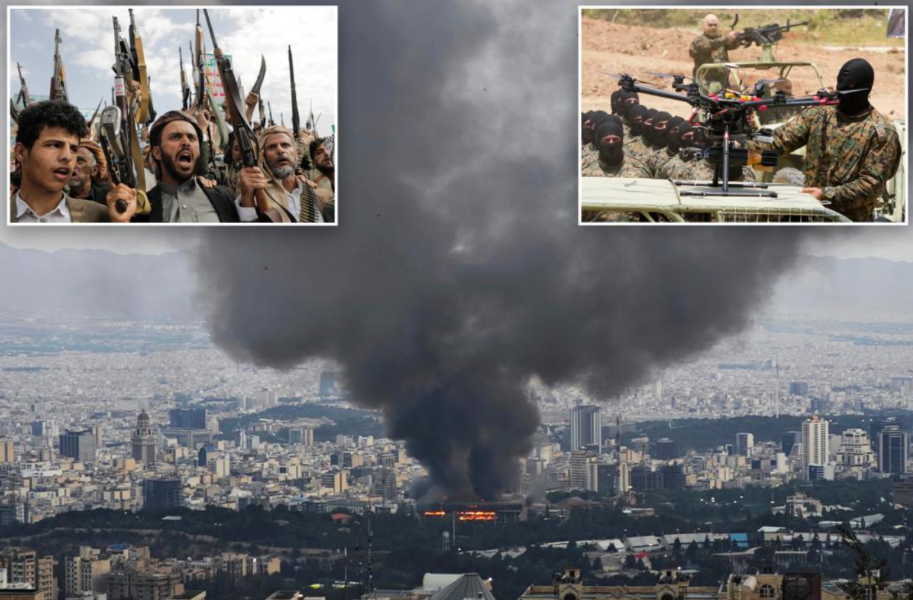
Iran’s Allies Retreat: Axis of Resistance Withers Amid Growing Regional Pressure
Iran’s once-formidable “Axis of Resistance” is now showing deep cracks, with many of its longtime militant allies distancing themselves from Tehran as the Islamic Republic grapples with dwindling regional influence and increasing isolation in its conflict with Israel.
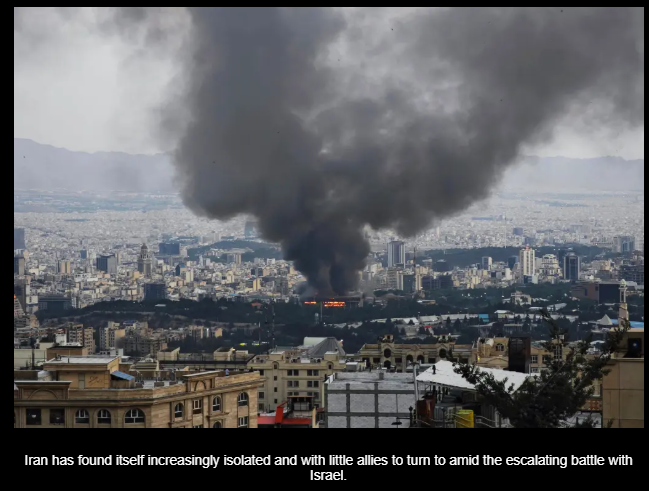
Experts say that the constellation of Iran-backed groups across the Middle East — from Hezbollah in Lebanon to Hamas in Gaza, and the Houthis in Yemen to Shiite militias in Iraq — are more preoccupied with their own survival than defending their Iranian benefactor. Years of military losses and shifting political priorities have left them unwilling or unable to escalate the fight on Iran’s behalf.

“For all of these networks right now, it’s about survival. They all understand the wrath of these types of military campaigns,” said Renad Mansour, senior fellow and director of the Iraq Initiative at the Chatham House think tank, in an interview with The Wall Street Journal. “Many of them question if this is the time for resistance or whether it’s the time to keep your head down and try to stay out of this conflict.”
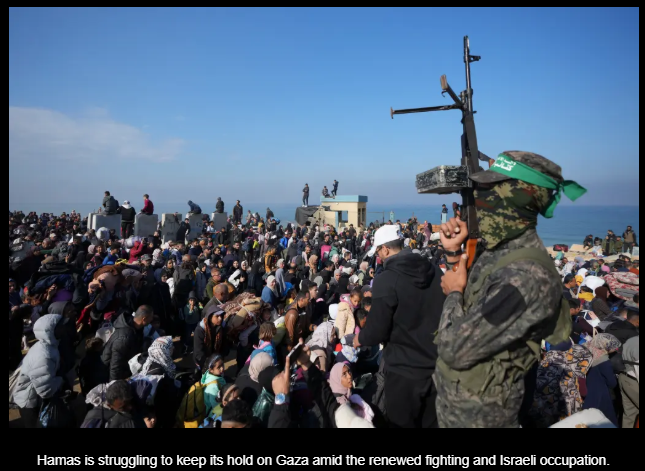
Among the most striking examples of retreat is Hezbollah, once seen as Iran’s strongest and most loyal proxy. Following a devastating Israeli campaign in Lebanon last year that reportedly killed nearly all of the group’s senior leadership — including its founder Hassan Nasrallah — Hezbollah has significantly scaled back its operations. A surprise “pager” attack by Israel in September killed dozens of militants and injured thousands more, according to Arab diplomats. Since then, Hezbollah has not fired a single rocket following last week’s attacks on Iran.

Disillusionment is reportedly growing within Hezbollah’s ranks. Some members blame the Islamic Revolutionary Guard Corps (IRGC) for intelligence failures that allowed Israel’s surprise assault, and believe Iran did little to protect them. Lebanese officials, including President Joseph Aoun and Prime Minister Nawaf Salam, have publicly insisted that their country will not be dragged into another war — further isolating Hezbollah from Tehran’s current regional ambitions.

The shift away from Iran is not limited to Lebanon. In Syria, the sudden ouster of longtime dictator Bashar al-Assad in a swift revolution late last year dealt a major blow to Iran’s regional ambitions. Assad had been one of Tehran’s key allies, but reports suggest Iran did not instruct its militias to defend him, instead urging them to evacuate. This perceived abandonment has sent a stark message across the resistance network.
In Iraq, the traditionally militant Iran-backed Shiite militias have adopted a notably cautious stance. Unlike previous conflicts, they have not launched attacks on U.S. bases — a sign of their reluctance to jeopardize their current political and economic gains. Many militia leaders are now embedded in Iraq’s government and benefiting from the country’s oil boom. “They’ve been sort of benefiting from Iraq’s stability, in a way, and the high oil prices to develop economic empires,” said Mansour.
So far, only Kataeb Hezbollah has commented on the current crisis, stating that it would only act if the United States directly enters the conflict.
Even the Houthis in Yemen — who have vowed to attack Israeli and U.S. ships in the Red Sea and Gulf of Aden in solidarity with Iran — are operating with diminished capability. After a series of intense U.S. and British airstrikes in March and April, their missile and drone infrastructure has been significantly degraded. According to American officials, these strikes, part of the so-called SignalGate operation, have severely limited the group’s ability to project force.
Iran now faces a strategic vacuum. Its “Axis of Resistance,” once seen as a powerful regional deterrent, is faltering. Beset by internal doubts, military losses, and shifting alliances, the proxies that once defined Tehran’s reach are increasingly choosing to lie low rather than stand by the Islamic Republic in its hour of need.
 Adapted by ASEAN Now from NYP 2025-06-21
Adapted by ASEAN Now from NYP 2025-06-21
-
 1
1
-
 3
3
-
- Popular Post
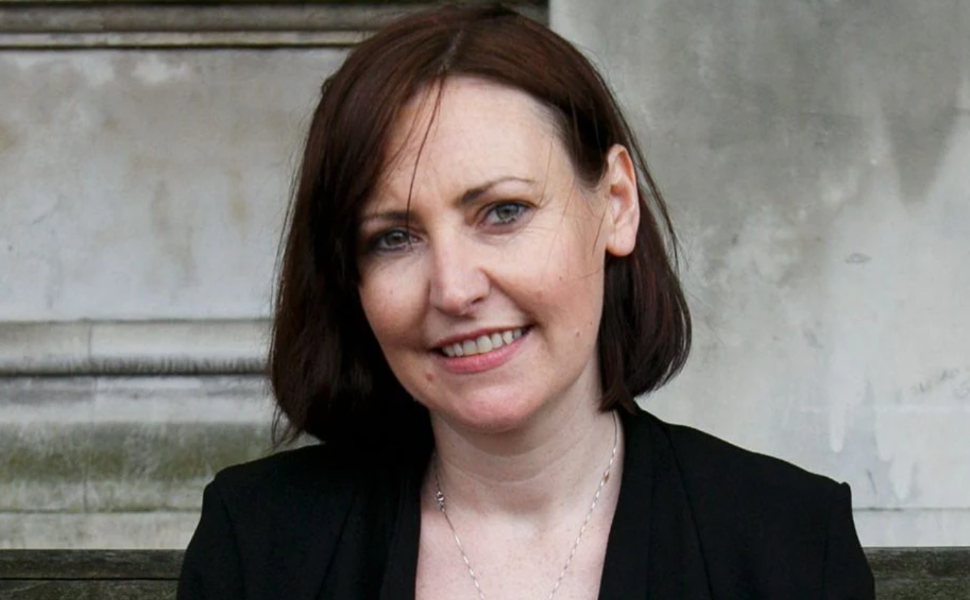
Labour Whip Resigns in Protest Against Starmer’s Welfare Reforms
Labour MP Vicky Foxcroft has resigned from her role as a party whip, stating she cannot stand behind welfare reforms proposed by Prime Minister Sir Keir Starmer that would result in financial losses for disabled people.
In a letter addressed directly to Starmer, Foxcroft expressed her opposition to what she described as damaging and unjust changes to the welfare system. “I cannot support reforms which include cuts to disabled people’s finances,” she wrote, making her stance clear in a growing internal dispute within the Labour Party.
BREAKING: Labour MP Vicky Foxcroft has resigned from her post as a government whip over Sir Keir Starmer's plan to cut benefits.
— Sky News (@SkyNews) June 19, 2025
Latest: https://t.co/mqR3CfqsUv
📺 Sky 501, Virgin 602, Freeview 233 pic.twitter.com/vO3SYp4rcMFoxcroft’s resignation comes as tensions continue to rise over a controversial £5 billion-a-year package of proposed savings to the government’s disability and sickness benefits bill. Central to the plan are reductions in the personal independence payment (PIP), a benefit designed to support people with long-term physical or mental health conditions.
These measures have sparked the largest rebellion of Starmer’s leadership so far. More than 150 Labour MPs have reportedly signed a private letter voicing their opposition to the planned cuts, underscoring a deepening divide between the party’s leadership and its backbenchers.
Despite mounting pressure, the Prime Minister has remained defiant. Over the weekend, he made it clear he was prepared to face down dissent from within his own ranks, emphasizing the necessity of implementing the reforms. “The reforms must be pushed through,” he insisted, signaling his determination to proceed despite the backlash.
Specific details of the legislative changes are expected to be laid out later this week, ahead of a crucial parliamentary vote likely to take place before summer recess begins next month. The outcome of that vote may prove to be a defining moment for Starmer’s administration, as he seeks to press forward with a policy that has triggered both political fallout and public controversy.
Foxcroft’s departure from the frontbench adds further weight to the growing opposition movement and highlights the difficult balancing act facing Labour’s leadership: reconciling fiscal discipline with social responsibility, while maintaining party unity in the lead-up to a critical vote.
Her resignation letter marks a public and pointed rejection of the current direction of Labour policy under Starmer’s leadership, placing further scrutiny on the Prime Minister’s handling of internal dissent and the broader implications of cutting support for vulnerable citizens.
The issue of disability benefits reform is fast becoming a litmus test not only for Starmer’s leadership, but for Labour’s core values as a party that has long prided itself on defending the welfare state.
 Adapted by ASEAN Now from The Telegraph 2025-06-21
Adapted by ASEAN Now from The Telegraph 2025-06-21
-
 3
3
-
Topic clean up. A number of off topic posts and replies removed. @PatThaiM please discuss the topic not what you want the topic to be.
-
 1
1
-
 1
1
-
-
Troll posts removed @BLMFem please stop the baiting and continued bickering
-
 1
1
-
-
Another off topic post removed. Please discuss the topic without deliberate diversion attempts, read the OP about what this is about and not what you want it to be about.
Trump to make decision on US involvement 'within two weeks'
If you want to discuss Trumps political supporters/opponents then there are other topics such as this one.
-
 1
1
-
-
Comment on moderation removed @KhaoHom
-
Please continue in the 'World News" forum here:
Obama Warns U.S. Teeters on Edge of Autocracy While Urging Hope and Civic Unity
//closed//
-
 1
1
-
-

Nippon Steel Seals U.S. Steel Takeover After Striking Unprecedented Deal with Trump
Nippon Steel has officially completed its $14.9 billion acquisition of U.S. Steel, finalizing a controversial deal that grants the U.S. government extraordinary oversight in exchange for presidential approval. The Japanese firm’s takeover of the iconic 124-year-old American company, which has long symbolized the country’s industrial strength, marks a significant milestone in the global steel industry, positioning Nippon as a dominant player in the U.S. market.
Originally announced in 2023, the acquisition was initially seen as a financial lifeline for the beleaguered U.S. steelmaker. However, the plan soon became a political flashpoint, encountering fierce resistance from both sides of the political spectrum during the 2024 U.S. presidential campaign.
Trump, however, endorsed the deal last week after receiving extensive concessions from Nippon. In an executive order signed on Friday, he gave formal approval, declaring that his concerns had been satisfied.
As part of the agreement, Nippon committed to purchasing all outstanding shares of U.S. Steel at $55 each and absorbing the company’s debt—bringing the total value of the transaction to $14.9 billion. In addition, the Japanese firm pledged to invest $11 billion into U.S. Steel by 2028, including the construction of a new facility expected to be completed after that year.
Perhaps most notably, Nippon agreed to grant the U.S. government a “golden share,” an unusual provision that gives federal authorities veto power over key corporate decisions. This includes the ability to block the transfer of jobs or production outside the country, as well as prevent closures or idling of domestic factories.
In a joint statement, Nippon and U.S. Steel confirmed, “This partnership ensures that U.S. Steel will retain its iconic name and headquarters in Pittsburgh, Pennsylvania, and that it will continue to be mined, melted, and made in America for generations to come.” The companies also said the deal would “protect and create more than 100,000 jobs.”
To further solidify its American credentials, Nippon has agreed to keep the company’s headquarters in Pittsburgh and appoint U.S. citizens to critical leadership roles, including chief executive and a majority of the board.
Trump, who has long framed steel production as central to his economic policy, recently raised tariffs on steel imports to 50% to further protect American producers. He said his shift in position came after meetings with local leaders who warned that U.S. Steel would likely slash jobs if the Japanese investment fell through.
Despite presidential approval, the acquisition has not escaped criticism. The United Steelworkers union, which staunchly opposed the deal, accused former President Joe Biden of politicizing the national security review when he blocked the acquisition during the final weeks of his term. The companies responded with a lawsuit challenging Biden’s intervention.
David McCall, president of the United Steelworkers, criticized the final agreement, saying it “granted the president a startling degree of personal control” over the corporation. He warned that while public attention may now fade, the union would continue to monitor Nippon’s adherence to its promises. “However, our union will remain. We will continue watching, holding Nippon to its commitments,” McCall said.
 Adapted by ASEAN Now from BBC 2025-06-20
Adapted by ASEAN Now from BBC 2025-06-20
-
 1
1
-
 1
1
-




Trump Confirms Surprise US Airstrikes on Iran’s Nuclear Sites, Including Fordo
in World News
Posted
UPDATE:
Starmer Supports Trump’s Strike on Iran, Calling Nuclear Threat “Grave to Global Security”
Starmer Supports Trump’s Strike on Iran, Calling Nuclear Threat “Grave to Global Security”
Prime Minister Keir Starmer has offered Britain’s full support for the surprise US airstrikes on Iran’s nuclear facilities, declaring that Tehran’s pursuit of nuclear weapons represents “a grave threat to international security.” His endorsement came just hours after President Donald Trump confirmed that US forces had bombed three Iranian nuclear sites, including the heavily fortified Fordow facility.
In a statement released early this morning, Starmer said, “Iran's nuclear programme is a grave threat to international security. Iran can never be allowed to develop a nuclear weapon and the US has taken action to alleviate that threat. The situation in the Middle East remains volatile and stability in the region is a priority. We call on Iran to return to the negotiating table and reach a diplomatic solution to end this crisis.”
The Fordow site, located roughly 80 miles south of Tehran and buried deep within a mountain, was reportedly hit with a 30,000-pound “bunker buster” bomb. The US also launched Tomahawk cruise missiles from submarines targeting other key nuclear facilities at Natanz and Isfahan. Trump described the strikes as a “spectacular military success” during a late-night address from the White House, claiming that the uranium enrichment base at Fordow had been “flattened.”
According to reports from US defense sources, the bombers used in the strike flew directly from the United States rather than operating from the joint UK/US base at Diego Garcia in the Indian Ocean. While the UK was not directly involved in the operation, Business Secretary Jonathan Reynolds confirmed that Britain was informed ahead of time.
The Prime Minister’s endorsement of US military action marks a notable shift, as Starmer had previously urged caution and emphasized the need for diplomatic solutions to avoid escalating tensions across the Middle East. However, following the strikes, he has publicly recognized the US’s actions as a necessary step to curb Iran’s nuclear ambitions.
Support for the US strikes extended beyond the government benches. Opposition leader Kemi Badenoch said, “By targeting Iran’s nuclear sites, the US has taken decisive action against a regime that fuels global terror and directly threatens the UK. Iranian operatives have plotted murders and attacks on British soil. We should stand firmly with the US and Israel.”
Reform UK leader Nigel Farage also endorsed the airstrikes, posting on social media: “Iran must not be allowed to have nuclear weapons, the future of Israel depends on it.”
The international fallout from the operation remains uncertain, but the political response in the UK has been overwhelmingly in favor of the strikes. With tensions in the Middle East already dangerously high, the backing of America’s actions by the UK’s political establishment signals a rare moment of unity in confronting what many see as a defining threat to global stability.